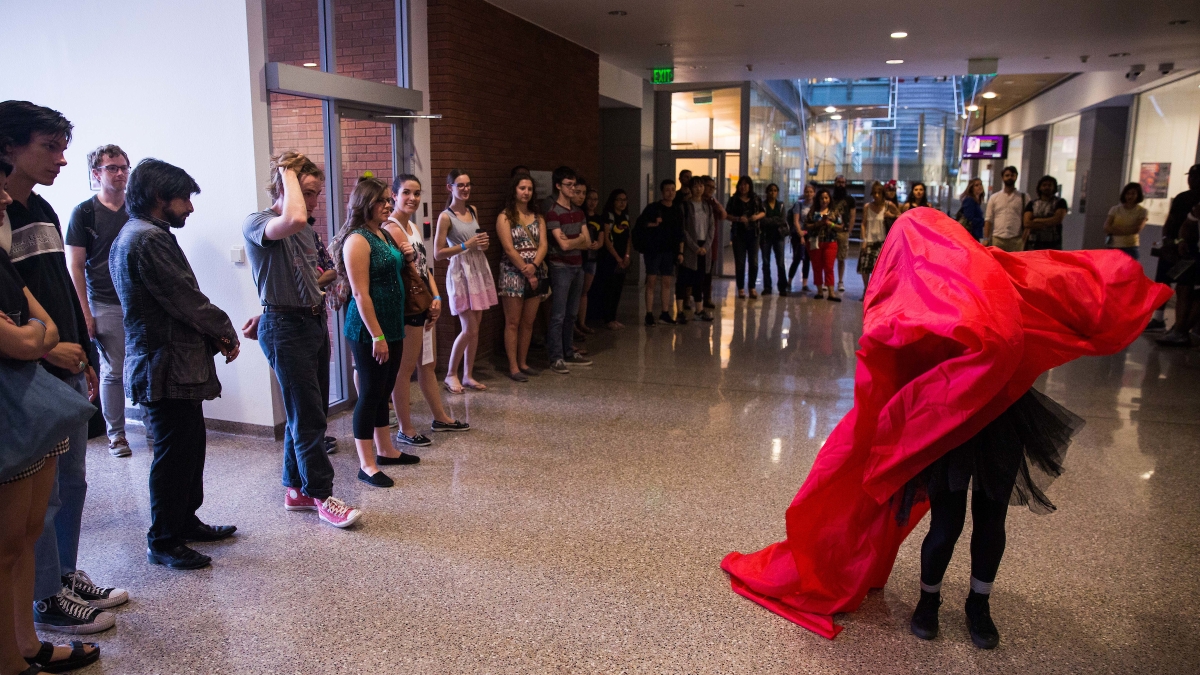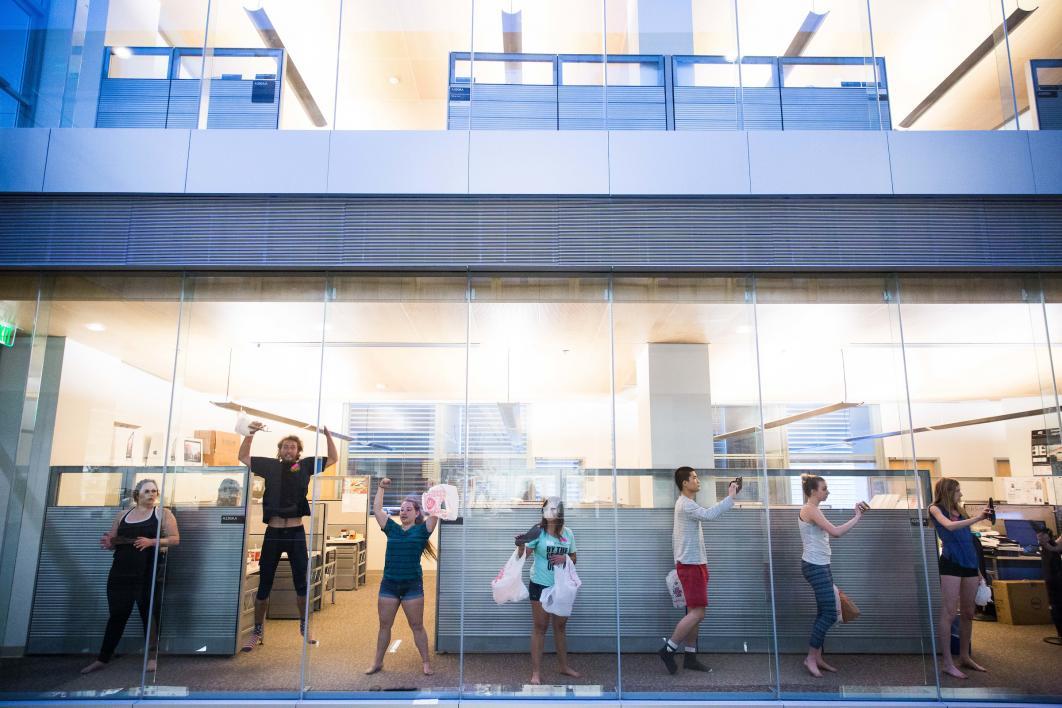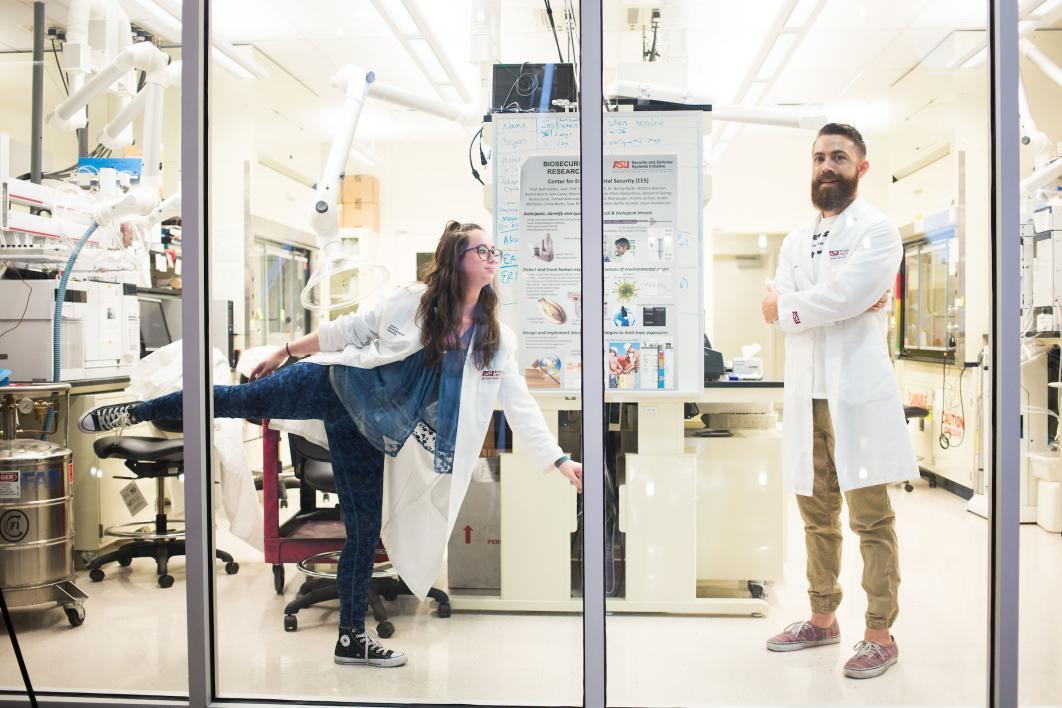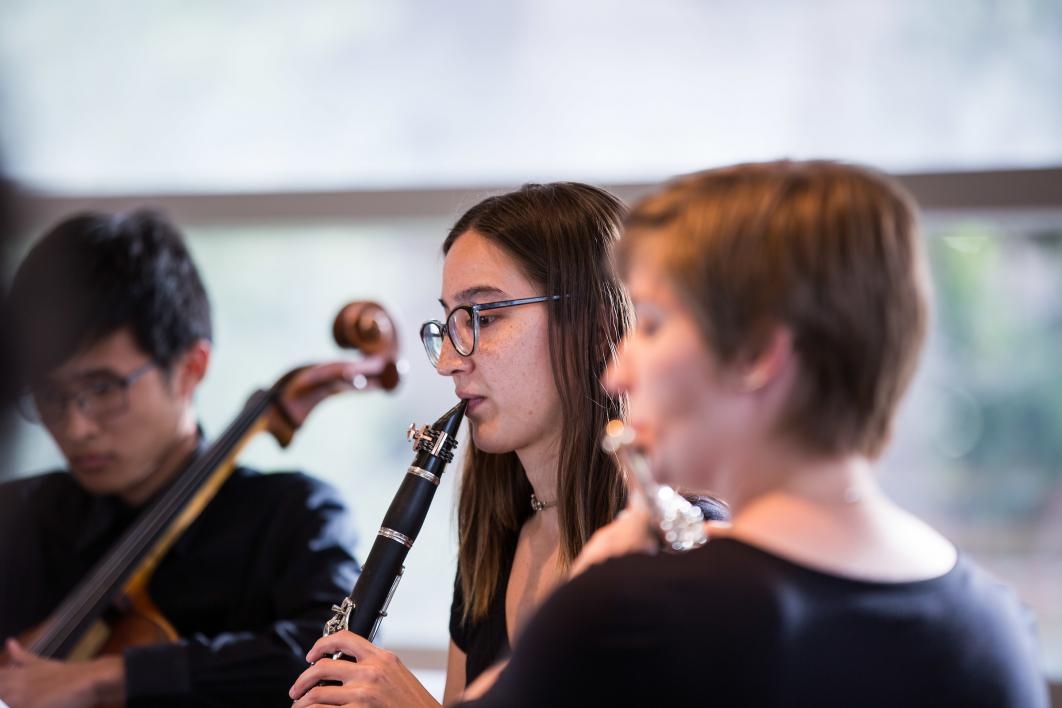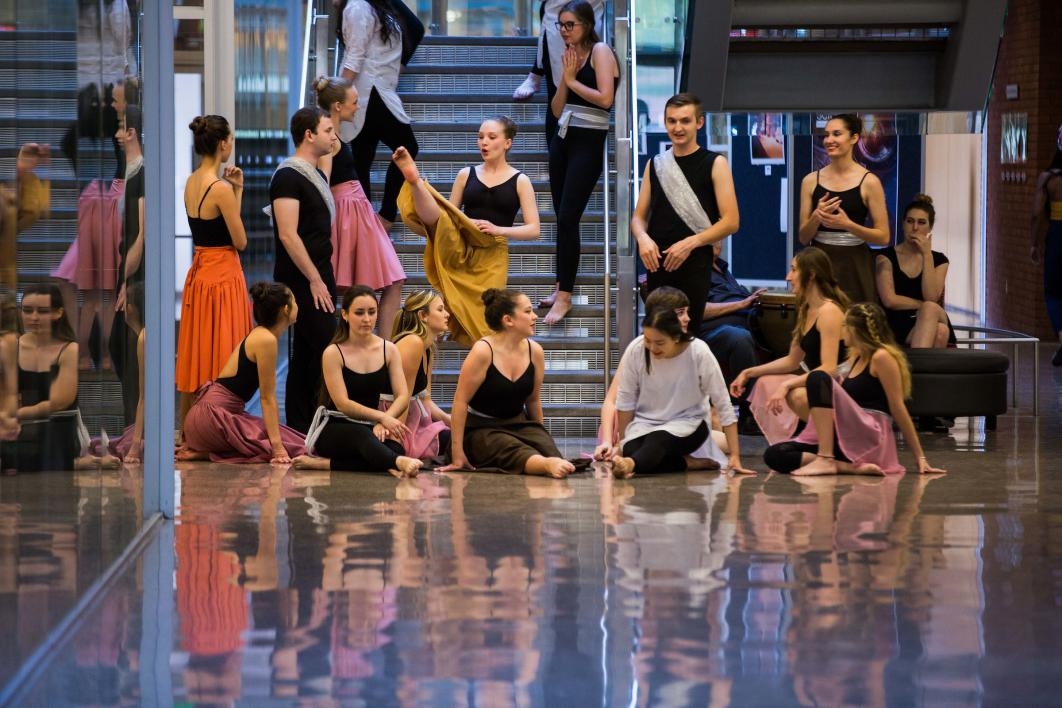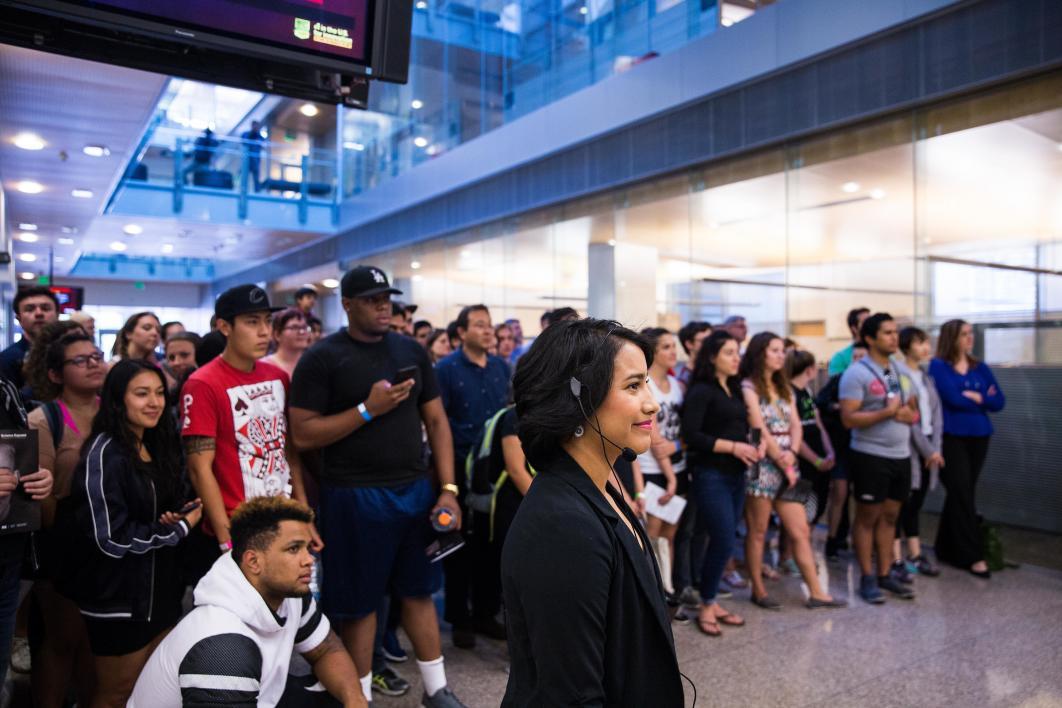An Arizona State University semesterlong fusion experiment that paired artists from the Herberger Institute for Design and the Arts with scientists from the Biodesign Institute culminated in a one-night-only performance of “Science Exposed: Bringing Science to Life through the Arts.”
Video by Ken Fagan/ASU Now
The evening kicked off with a chamber musical alchemy from two compositions by graduate students Zachary Bush and Stephen Mitton, as they interpreted the daily struggles of Alzheimer’s patients, caregivers and the scientists searching for a cure.
With neuroscientists Paul Coleman and Diego Mastroeni serving as personal guides to visits to brain banks and research labs, Bush’s “Cycles” explored the research cycle, where according to Bush “months or years of methodical effort to try and prove a hypothesis” all too often result in setbacks. “However,” he said, “the experiments eventually are complete and the triumph of discovery prevails” — but for only a short time, when scientists must confront the next challenge and start the whole process once again. Listen to it below.
Mitton’s “Stages” captured “the daily struggles of Alzheimer’s sufferers and their caregivers as the disease progresses through various stages over time.” Mitton’s evocative work focused on the emotional and physical toll on all affected, with a 12-note theme, representing the personality of an Alzheimer’s victim, undergoing subtle variations over the course of the performance and ending on a bittersweet note. Listen to it below.
Next, Herberger Professor Liz Lerman’s “Animating Research” project combined contemporary movement, dance and theater into a multimedia, immersive extravaganza. A dozen artists were paired with molecular virologists, evolutionary biologists and engineers to create expressive pieces that utilized and fully explored the Biodesign building space for both the audience and performers.
class="glide image-carousel aligned-carousel slider-start glide--ltr glide--slider glide--swipeable"
id="glide-473146" data-remove-side-background="false"
data-image-auto-size="true" data-has-shadow="true" data-current-index="0">
data-testid="arrows-container">
Lerman, a choreographer and MacArthur Fellow, led the group to create a dance collaboration, engaging tools of movement, performance and media with her students in her semesterlong “Animating Research” class. The expressive pieces evoked the science behind X-ray lasers and protein molecules, the role of cancer cells and our bodies, the spread of viruses throughout our ecosystem, the accumulation and environmental damage caused by microplastics, and using the leading cause of food poisoning, salmonella, as a “warrior” in the fight against cancer. Everything from classical ballet and modern hip-hop to interpretive dance and multimedia performance art installations were used in a creative expression to explain and engage the science.
The energy level and audience engagement steadily rose, and the evening culminated in an audience participatory dance, with groups acting out the roles of molecules to create an early diagnostic for cancer.
Written by Joe Caspermeyer/Biodesign Institute
Top photo: An "atom" dances around the circle as it goes through a "red laser" during the "Science Exposed" performance at the Biodesign Institute on Wednesday. Photo by Deanna Dent/ASU Now
More Science and technology

Stuck at the airport and we love it #not
Airports don’t bring out the best in people.Ten years ago, Ashwin Rajadesingan was traveling and had that thought. Today, he is an assistant professor at the University of Texas at Austin, but back…

ASU in position to accelerate collaboration between space, semiconductor industries
More than 200 academic, business and government leaders in the space industry converged in Tempe March 19–20 for the third annual Arizona Space Summit, a statewide effort designed to elevate…
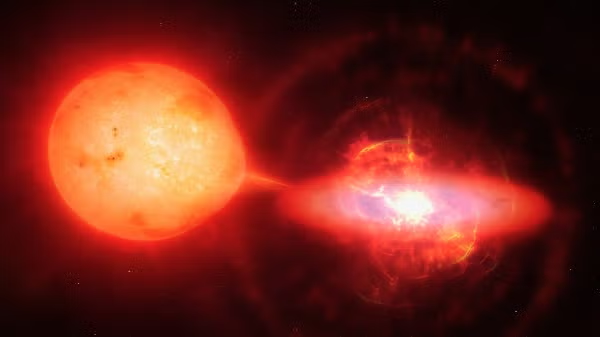
A spectacular celestial event: Nova explosion in Northern Crown constellation expected within 18 months
Within the next year to 18 months, stargazers around the world will witness a dazzling celestial event as a “new” star appears in the constellation Corona Borealis, also known as the Northern Crown.…


